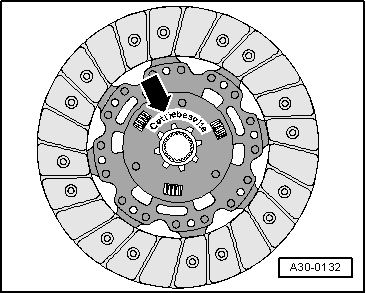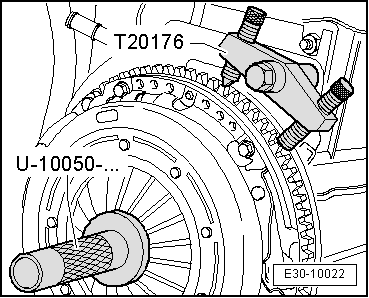| Installation is carried out in the reverse order; noting the following: |

Note | t
| Replace clutch plates and pressure disks with damaged or loose riveted unions. |
| t
| The pressure disks and the clutch plate must always be replaced together. |
| t
| To reduce the unpleasant smells of a burnt clutch, the clutch bell-housing must be thoroughly cleaned, along with the flywheel and engine at the side facing the gearbox. |
| t
| Clean the input shaft grooves, and if the clutch plates are worn, also those of the hub; eliminate corrosion and apply a very fine layer of approved lubricating grease to the grooves → Parts catalogue. Then, move the clutch plate on the input shaft from side to side, until the hub moves smoothly on the shaft. Always remove excess grease. |
| t
| The pressure disks come with corrosion protection and are greased. Only the contact surface must be cleaned; otherwise the working life of the clutch will be considerably reduced. |
| t
| The pressure disk and clutch plate lining contact surface should be completely pressed against the flywheel. Only then can the securing bolts be inserted. |
| –
| Pay special attention to the clutch plate installation position: |
|
|
|
 Note
Note

 Note
Note
